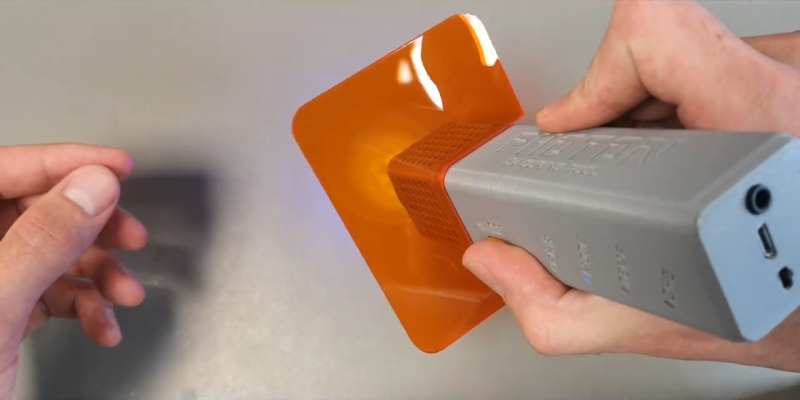The average person’s experience with an ultraviolet (UV) wand is getting a cavity at the dentist. However, anyone with a resin-based 3d printer knows how important a UV curing system is. Often times some spots on a print need a little bit of extra UV to firm up. [Mile] has set out to create an open-source UV curing wand named Photon that is cost-effective and easy to build.
What’s interesting here is that there are dozens if not hundreds of UV curing systems ranging from $5 LED flashlights to larger industrial flood systems. [Mile] dives right in and shows the trade-offs that those cheaper modules are making as well as what the commercial systems are doing that he isn’t. [Mile’s] Photon wand tries to be energy efficient with more irradiated power while staying at a lower cost. This is done by carefully selecting the CSP LEDs instead of traditional wire-bonded and making sure the light source is properly focused and cooled. From the clean PCB and slick case, it is quite clear that [Mile] has gone the extra step to make this production-friendly. Since there are two industry-standard wavelengths that resins cure at (364nm and 405nm), the LED modules in Photon are user-replaceable.
What we love about this project is looking past what is readily available and diving deep. First understanding the drawbacks and limitations of what is there, then setting a goal and pushing through to something different. This isn’t the first UV curing tool we’ve seen recently, so it seems there is a clear need for something better that’s what is out there today.



















Before we built our version of >100W LED UVA curing chambers, I used a violet laser pointer for UV resins (note the 455nm true blue laser I tried did not work with any of the acrylic resins). However, some 5mW violet laser pointers can kick off most resins up to 20cm away, or over 1cm thick of clear acrylic gel optical glue.
The 405nm Pointers are under $6 from the usual auction sites, and definitely get eye protection if you haven’t already… as I hear getting cataracts in the eyes later in life is lame, and braille keyboards are still rather expensive.
;-)
Building my own UVC sterilizing oven. Could it work for curing as well?
You will find UVC tends to damage the resin surfaces a bit, and can cause prints to discolor or yellow slightly (we tried an old eprom eraser tube). Anecdotally, I found UVC makes parts a bit more brittle, and although this observation seemed consistent with other builders experiences it is hard to quantify the difference without more testing (one theory was UVA penetrated deeper into solid resin, but YMMV).
However, one huge upside of UVC was solid infill parts tended to have less odor after washing in de-greaser hand soap and hot water. Even after 20 minutes of 100W of UVA over a relatively small area of a thick part, it may still take several days for a solid resin part to finish curing and diffusing out remaining compounds. We did a group buy for the parts we needed, and did post the simple design details given it was a one-time build.
Best regards,
=)
You could say he has gone the extra mile.
I’ll show myself out.
“The average person’s experience with an ultraviolet (UV) wand is getting a cavity at the dentist.”
Got it: UV causes cavities. Another reason to wear a mask!
Instructions unclear, bought a mask with cavities because an online robotic voice told me to. Am I safe from Corona now?
Instructions unclear: drank Corona.
Nice! But isn’t the name going to cause some confusion? What with the SLA printer line by the same name…
It would be much simpler to buy LED flashlight and transplant UV LED into it. (assuming you for some reason can’t buy UV LED flashlight :-)
Hmm, why don’t resin printers just have a curing mode, since they’ve already got a UV light source built in? Just swap out the build platform for a rotating platter, stick the rinsed-out model to it, put a reflective cover on, then turn on the UV.
If LCD screen degradation is a concern, then just make the screen easy to move out of the way.
“The average person’s experience with an ultraviolet (UV) wand is getting a cavity at the dentist.” Dunno ’bout you but I would go to the Dentist to get a cavity FILLED, not to GET a cavity in the first place!